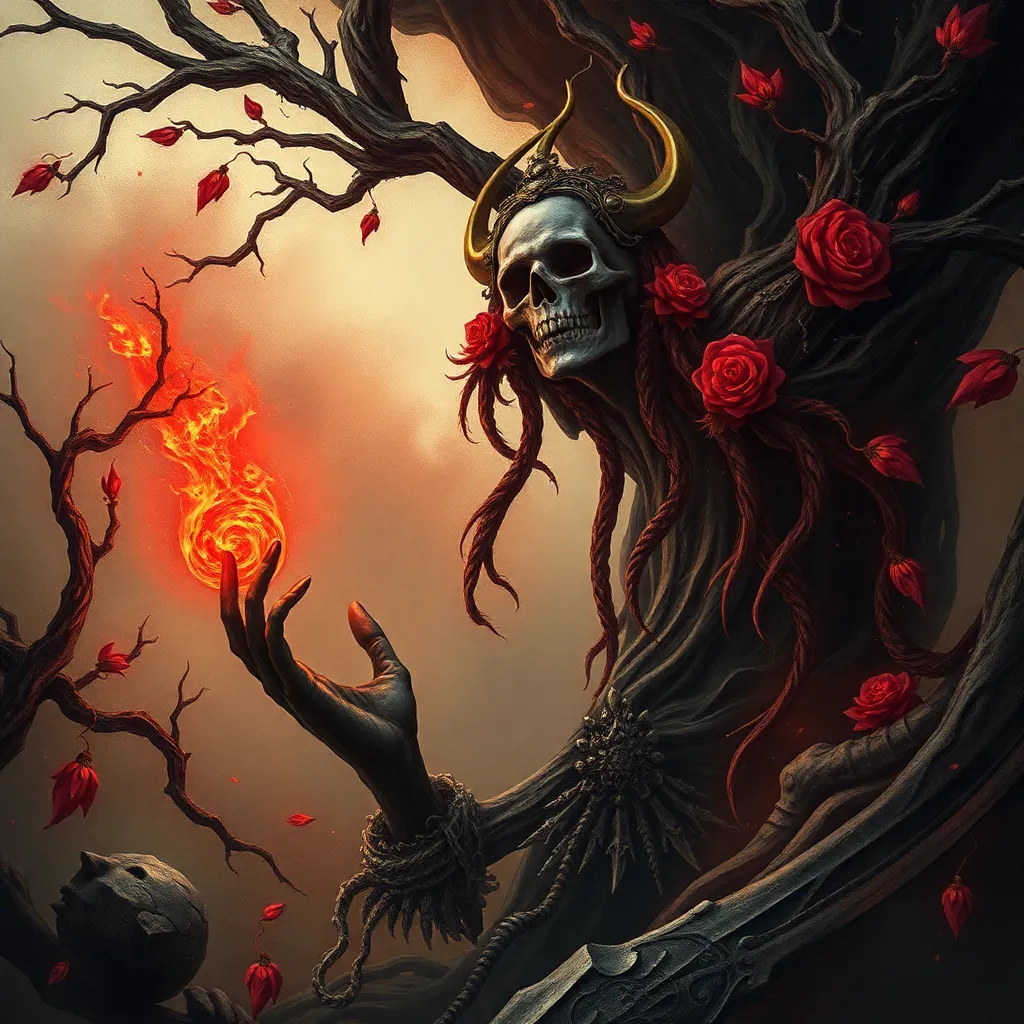Legends of the Underworld: From Sumer to Scandinavia
Introduction to the Underworld in Mythology
The concept of the underworld is a prevalent theme in various mythologies around the world. It represents the realm of the dead, a place where souls journey after their earthly existence. The significance of the underworld varies among cultures, often reflecting societal views on death, morality, and the afterlife.
This article explores the underworld beliefs from ancient Sumer to Scandinavian mythology, examining key figures, structures, and rituals associated with these realms of the dead. Through this journey, we will uncover the common themes that connect these diverse cultures and their unique interpretations of what lies beyond life.
The Sumerian Underworld: Kur and Its Deities
In Sumerian mythology, the underworld is known as Kur. This dark and dreary realm is described as a place of shadows, cut off from the light of the living world. The geography of Kur includes various regions, each with its own significance and inhabitants.
Key figures in the Sumerian underworld include:
- Ereshkigal: The queen of the underworld, responsible for ruling over the dead.
- Nergal: A god associated with war and the underworld, often depicted as Ereshkigal’s consort.
Rituals surrounding death in Sumer involved burial practices and offerings to appease the deities of the underworld. The Sumerians believed in a bleak afterlife, where souls faced judgment based on their earthly deeds.
Ancient Egypt: Duat and the Journey of the Soul
The Egyptian underworld, known as Duat, plays a central role in their cosmology and belief system. Duat is depicted as a complex realm filled with challenges that the deceased must navigate. The journey through Duat is essential for the soul’s resurrection and rebirth.
Osiris, the god of the afterlife, is a pivotal figure in this journey. He presides over the judgment of souls, where the heart of the deceased is weighed against the feather of Ma’at, symbolizing truth and justice. A soul deemed worthy is granted passage to the Field of Reeds, a paradise, while the unworthy face eternal punishment.
When compared to Sumerian beliefs, Egyptian views on the afterlife emphasize the possibility of resurrection and reward, showcasing a more optimistic outlook on death.
Greek Mythology: Hades and the Underworld
In Greek mythology, the underworld is known as Hades, named after its ruler. This realm is divided into several regions, including the Fields of Asphodel, where ordinary souls reside, and Tartarus, a place of punishment for the wicked.
Key figures in the Greek underworld include:
- Hades: The god of the underworld, overseeing the souls of the dead.
- Persephone: The queen of the underworld, who spends part of the year above ground.
- Charon: The ferryman who transports souls across the River Styx.
The River Styx serves as a boundary between the living and the dead, emphasizing the finality of death. Myths such as the tale of Orpheus illustrate the Greeks’ perspective on love, loss, and the belief that the dead can be reached, albeit with great difficulty.
Norse Mythology: Hel and the Nine Realms
In Norse mythology, the underworld is represented by Hel, ruled by the goddess Hel, who is often depicted as half alive and half dead. Hel’s realm is one of the nine worlds, and it serves as a destination for those who do not die in battle.
In contrast to Valhalla, the hall of the slain warriors, Hel is a place for those who lead ordinary lives. The Norse believed that fate and destiny played significant roles in determining one’s afterlife, with the concept of wyrd (fate) influencing the journey of the soul.
The duality of Hel and Valhalla reflects the Norse understanding of honor and valor in life and death.
Celtic Views of the Afterlife: Annwn and Otherworlds
The Celts had a unique perspective on the afterlife, with Annwn being one of the most notable realms. Annwn is often described as a paradise, filled with eternal youth and beauty, accessible to only a select few.
Key deities associated with Annwn include:
- Arawn: The king of Annwn, who rules over its blissful inhabitants.
- Blodeuwedd: A goddess associated with the Otherworld, representing transformation and change.
The concept of the Otherworld in Celtic beliefs often emphasizes the cyclical nature of life and death, contrasting with the more linear views found in other cultures.
Mesopotamian to Scandinavian Connections: Common Themes
Across cultures, common themes emerge in the myths surrounding the underworld. These include:
- The notion of judgment and the moral evaluation of one’s life.
- The presence of a ferryman or guide for the souls of the deceased.
- The contrasting realms for the honored and dishonored dead.
The evolution of these myths demonstrates how societies adapted and influenced one another, often shaped by their environmental conditions, agricultural practices, and social structures.
Rituals and Beliefs Associated with the Underworld
Funerary practices across Sumerian, Egyptian, Greek, and Norse cultures highlight the importance of rituals in ensuring a successful transition to the afterlife.
- Sumerians: Emphasized burial with offerings to appease the underworld deities.
- Egyptians: Conducted elaborate mummification and funerary rites, including the Book of the Dead.
- Greeks: Performed rituals to honor the dead and ensure safe passage across the River Styx.
- Norse: Valued ship burials and feasts to celebrate the deceased’s life and journey to the afterlife.
These rituals reflect the continuity and change in cultural beliefs regarding death and the afterlife, emphasizing the need to honor the dead.
Modern Interpretations and Legacy of Underworld Myths
Today, the myths of the underworld continue to resonate in literature, art, and popular culture. They inspire modern interpretations and adaptations that explore themes of mortality, the afterlife, and the human experience.
As we reflect on these ancient beliefs, we recognize their enduring legacy in shaping our understanding of life and death, illustrating our collective quest for meaning in the face of mortality.




